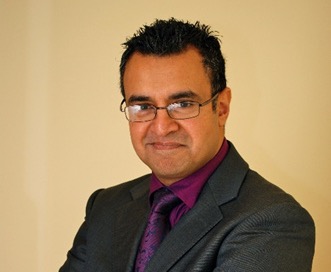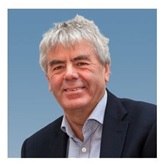In the modern world of post British companies such as GEC, Plessey, Ferranti, STL, few can boast a history of Integrated Design activities that goes beyond a decade or so.
Many companies spun out of these giants to stem the loss of the Integrated Circuit Design Industry in the United Kingdom. Some of these were startups run by brilliant entrepreneurs such as Gary Steele, Rod Oldfield and Ian Lankshear. What impressed me the most about these companies is their ability to survive in tough economic conditions and still carve out a niche in the market. Careful selection of both customers and projects is key and the ability to constantly challenge themselves in rapidly evolving markets.
Garfield Microelectronics
Rod Oldfield – Managing Director of Garfield Microelectronics
During my previous tenure at WIMMIC as Technical Director, I decided to engage the services of Garfield Microelectronics to design an SPI block. The first thing I did was to call Rod, rather than send an email. I find email very impersonal and not the best way to initiate collaboration. Rod answered and committed resources from Garfield to design the IP. A few months later, I met Rod at his Headquarters in Stroud, Gloucestershire.
Face to face, Rod is a very personable individual and can put customers at ease, making the job of starting new projects that much easier. Customers generally have tight deadlines and want evidence of that sense of urgency, in terms of cycle time and communication. Rod ensured both without any encouragement from me, which speaks very highly of him.
Garfield Microelectronics started out in April 1993. It was originally a collaboration of digital (Garfield) and analogue (Matrics) design houses combining to offer analogue/ mixed signal ASIC designs.
The company has thrived and grown over the years and more recently they have rebranded as GF Micro along with a new website and aiming for more market engagement.
Throughout its thirty years GF Micro has always remained independent and privately owned. It has kept the core values of professional and dedicated services from basic chip design through to full turnkey design and supply of finished products. This has all been achieved by constantly tweaking their operations and aims whilst keeping the core values and retaining their regular customers (>50% of GarField’s business is “repeat” business). This adaption of skills is even more critical in today’s market and as the customer choice for reliable independent suppliers becomes tougher, Garfield continues to improve its offerings – they now offer PCB design but always aligned with their core values. The primary ethos of Garfield is Collaborate Innovate Solve.
Hobbies entertain us and keep us active both mentally and physically. Rod enjoys making things out of wood, classes himself as a competent DIYer, skis regularly in the French Alps, is a foodie, keen walker and cycles.
Hilight Semiconductor
Gary Steele – CEO of Hilight Semiconductor
Gary Steele has a history of running highly successful high-tech companies that exit profitably.
My good friend Stuart Millard accepted a job at Microcosm, one of Gary’s ventures. Microcosm was one of the first British semiconductor company to aggressively use CMOS in Analog applications. The sceptics didn’t think Gary would succeed, but he did and heralded the use of CMOS in Analogue circuits.
Shortly after Microcosm, Gary started Phyworks, another successful company I have chronicled in a previous blog post. I remember at Phyworks, under Stuart Millard’s leadership, we targeted a SiGe BiCMOS Optical transceiver for the GPON market and delivered working silicon within one year. So successful was this venture that Maxim Integrated acquired Phyworks a year after this product was released. Gary is now running his fifth startup Hilight Semiconductor, headquartered in Southampton.
EnSilica
Ian Lankshear – CEO of EnSilica
At CML, I had the pleasure of working with some members of the EnSilica design team.
EnSilica started in 2001 initially as a semiconductor design consultancy working for the likes of Nokia, Panasonic, NXP, Imagination Technologies and Dialog Semiconductors.
In 2016 the management team made the decision that they wanted to scale the business by selling chips instead of just time. Ensilica has been through the route of developing IP and licensing but they believe that the way to really scale the business is through the fabless mixed-signal ASIC (Application Specific Integrated Circuit ) model. This is a well-proven model used by the likes of Dialog, Wolfson and CSR. Ensilica now has several chips in production including an automotive ASIL-D mixed-signal ASIC.
There has been a lot of consolidation in the ASIC market, and some of those suppliers are not so open to ASIC, focusing their resources on standard ASSP (Application Specific Standard Product). Ensilica has some chips that are the basis of an ASSP where they own the IP and seek lead customers who would be interested in their own versions.
Ensilica is now split into three business units, one being design services BU who work with companies with their own design team, RF and Communication BU who are working in more advanced nodes on communication chips from 40nm down to 7nm, and the Sensing and Control BU working on mixed signal chips from 130nm down to 28nm.
I asked Ian what his hobbies are. He replied, “I was always a keen runner, I was an active member of a local running group called Henley Hares until recently. I have now almost given-up running and moved to road and gravel cycling. I’m out with a cycling group most weekends come rain or shine, the group also does the occasional cycle trip abroad which is good fun”.
Thrive
The future is uncertain for the British Semiconductor Industry but as long as there are people like Rod, Gary and Ian, I’m sure we will thrive.
Author
 A veteran of 37 years in the Analog Integrated Circuit Design industry, Ash Madni continues to
A veteran of 37 years in the Analog Integrated Circuit Design industry, Ash Madni continues to
contribute to the rapidly changing world of Microelectronics.
Ash has worked for a number of big companies, such as Ferranti, STL, GEC Plessey Semiconductors, Maxim Integrated, Dialog Semiconductors, to name a few. He has also worked in startups, such as Phyworks.
During his tenure at GEC Plessey Semiconductors, Ash raised over 20 patents, including Synthesis Exploiting Algebraic Design, which was used successfully in a number of products. Ash is currently running his consultancy, Madni Technologies (UK) ltd.
For relaxation, Ash enjoys walking, spending time with his wife, daughters, grandchildren and friends. Ash is an active composer in Chamber and Orchestral music. Inspired by the works of Shelley and Stoker, Ash is working on his first SciFi novel Transmutation – the rise of Hemonra. Passionate about the Semiconductor industry, Ash is an active blogger for the Electronics Weekly website.
See also: Viewpoint: From BC108 to SiGe BiCMOS – why Analog ICs are great
 Electronics Weekly Electronics Design & Components Tech News
Electronics Weekly Electronics Design & Components Tech News





